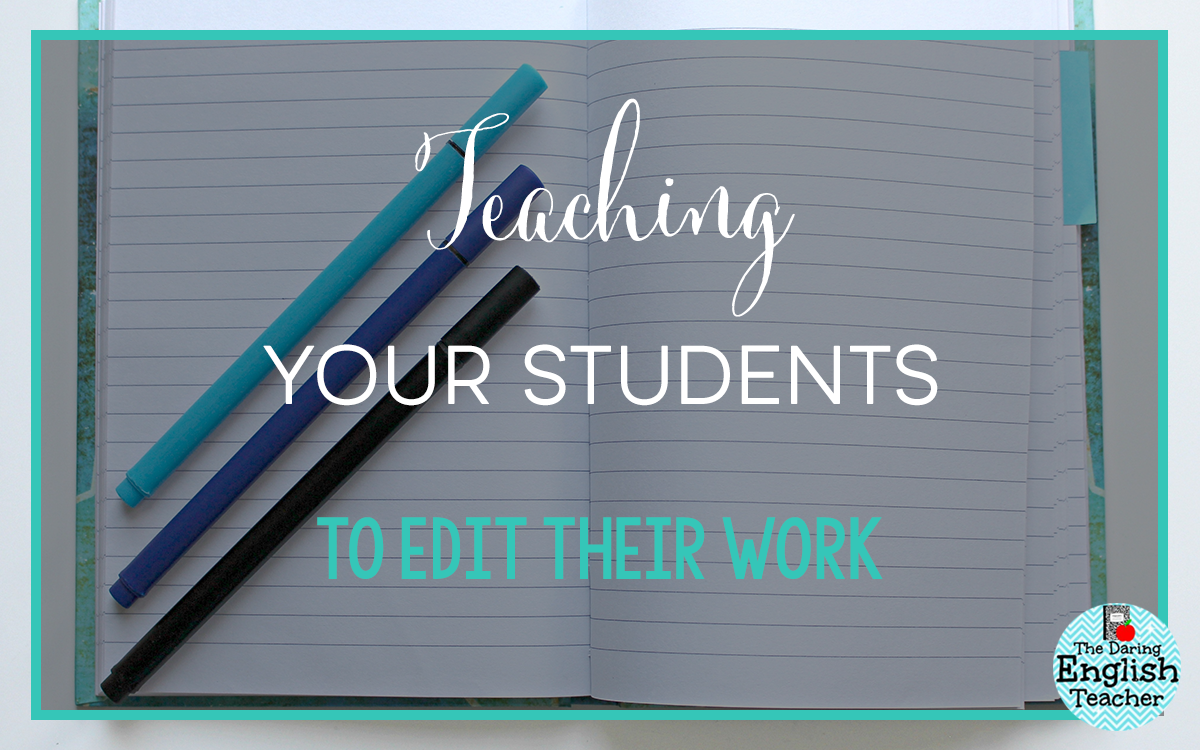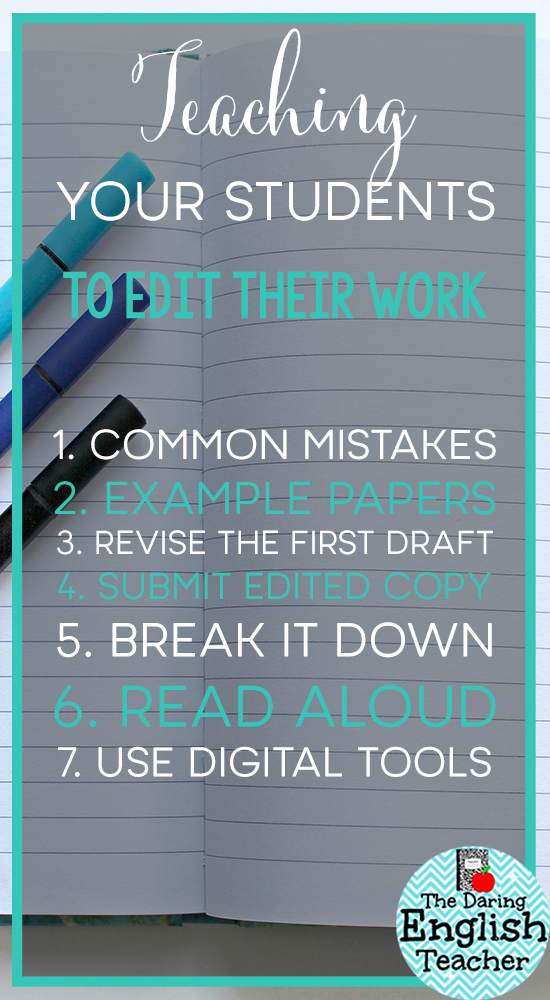Oftentimes, students will not edit their own work, as it does not seem necessary to them. What they may not realize is the importance of self-editing, especially when it means their writing will improve, and maybe even more important to them, their grades will improve. Teaching them to edit their own writing is one of the most important skills you can teach them. Here are seven ways to teach them this important skill:
1. Give students a list of commonly mistaken mechanics.
Sometimes students won’t edit a paper because they do not know what is wrong with it, and do not know where to start. Actually giving them the tools to see what they may have done wrong will give them the chance to correct it, with the added assurance that everyone makes mistakes like this too.
Join my email list!
Subscribe to receive updates from The Daring English Teacher.
2. Edit an example paper in class to show students the steps to take when editing themselves.
Sometimes students need to see the process in action. Edit an example paper in class with your students to model editing their own work. You can also have students work together in small groups on editing a paper collaboratively so that they learn from one another.
3. Assign a day to turn in a rough draft.
Setting specific deadlines will give students the push to actually finish their work. This will also assure you that they will make changes since they cannot turn in the same paper twice. The rough draft could be graded only for completion, so they also will not feel as if they will get marked down for making mistakes. This will make them want to finish editing their own work.
4. Turn in an edited copy with the final piece.
This is another way to really get your kids to edit their work because if they are required to turn in what they edited, they will actually edit. After you have shown them how to do it, with all the examples and lists, this should be a fairly easy step. You could even give them time in class after they finish a rough draft to edit, and then all they have to do at home is to make those changes.
5. Show the steps they should take when they read over their work.
Break down the editing process for students. With each step that you show your students, whether it be editing for content, clarity, or grammar, explain exactly what it is that you are doing. Make sure students take notes when you tell them the steps they need to take, as sometimes they may not even know where to begin, and you can really help them on this whole process by showing them the step-by-step.
6. Tell students to read their own paper out loud.
When reading out loud, students will be able to easily notice mistakes they may not recognize when only reading in their heads. Reading out loud is always a great tip to share with your class, as it not only allows them to improve their writing, but it also allows them to have a better comprehension of what they are reading. With a better comprehension, they will be better equipped to fix the ideas that do not work in their papers and create new ideas that fit better.
7. Have them take advantage of tools like spelling and grammar checks.
Teach your students that when they are unsure of what is the right grammar to use, the grammar and spelling checks are already in their word processors for help with their writing. These are great tools that students may not take advantage of enough. But you should remind them that these tools are not a substitute for actually checking their own grammar, as these tools are not always right. They are definitely helpful, but should not be entirely relied upon by your students.



